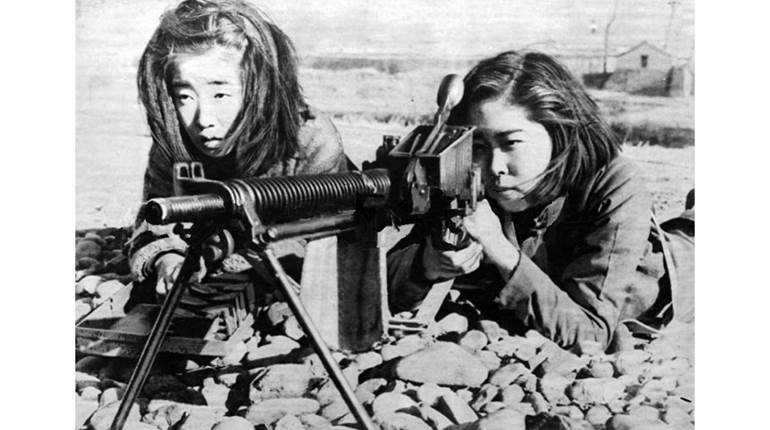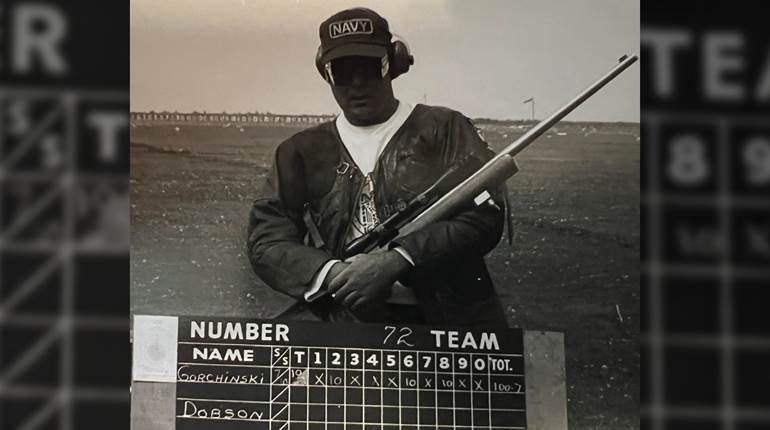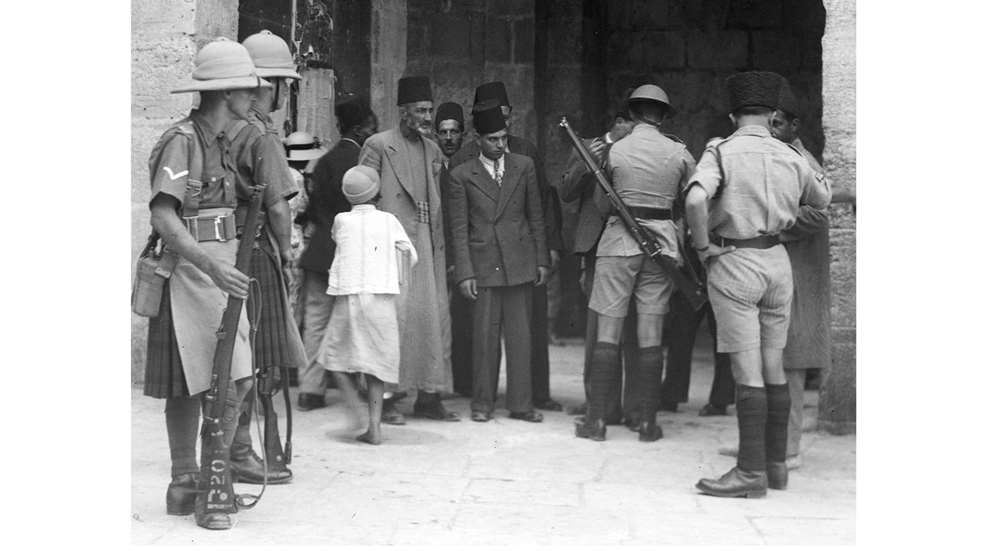
The terrible violence currently occurring in Israel and the Gaza Strip is terrifying, but sadly, it is not surprising. For the past century, the Palestinian territory has been rife with social upheaval, economic opportunity and disaster, and religious and ethnic wars and revolts, attacks and counterattacks. The conflict continues today with no end in sight.
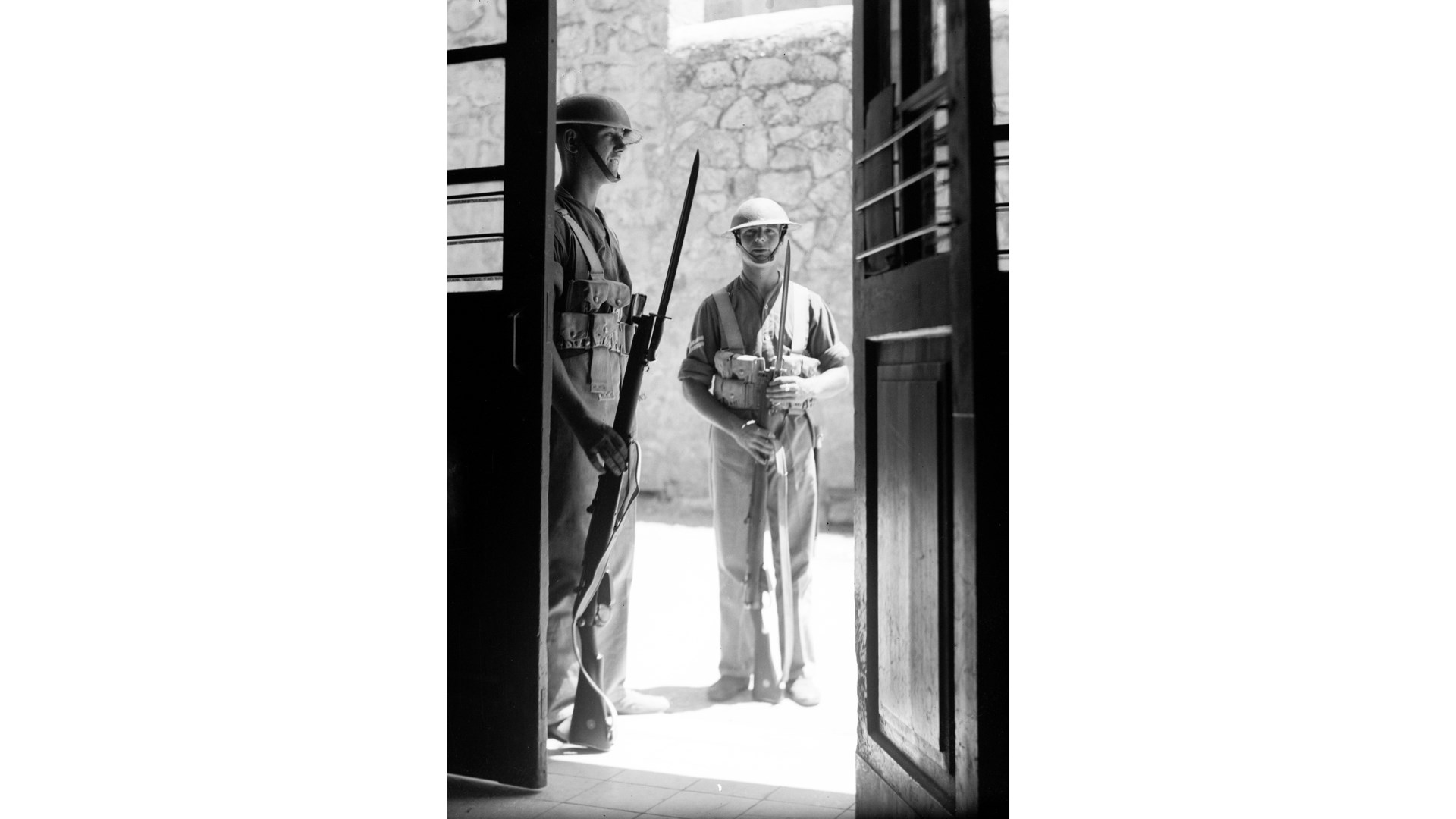 Securing the vestiges of their empire, British troops guard the entrance to a post office in Jerusalem during the 1936 Arab Revolt. Short Magazine Lee-Enfield No. 1 Mk. III rifles equipped with the Sword Bayonet, Pattern 1907.
Securing the vestiges of their empire, British troops guard the entrance to a post office in Jerusalem during the 1936 Arab Revolt. Short Magazine Lee-Enfield No. 1 Mk. III rifles equipped with the Sword Bayonet, Pattern 1907.
After World War I, the British Empire struggled to control many of its far-flung territories. In the British-administered “Palestinian Mandate,” modern troubles began to brew as early as 1920, as Jews and Arabs started a deadly cycle of retaliatory killings. As the years passed, tensions began to rise dramatically.
In 1935, the British government enacted a loose plan of establishing a “Jewish National Home” by opening up Palestine to Jewish immigration, and enabling them to purchase land across the territory. The response from European Jews was far greater than anticipated, and in 1935, more than 280,000 Jewish settlers arrived in Palestine. No one was prepared to deal with such a great and rapid influx of immigrants, and the economic and social repercussions were quickly felt throughout the territory.
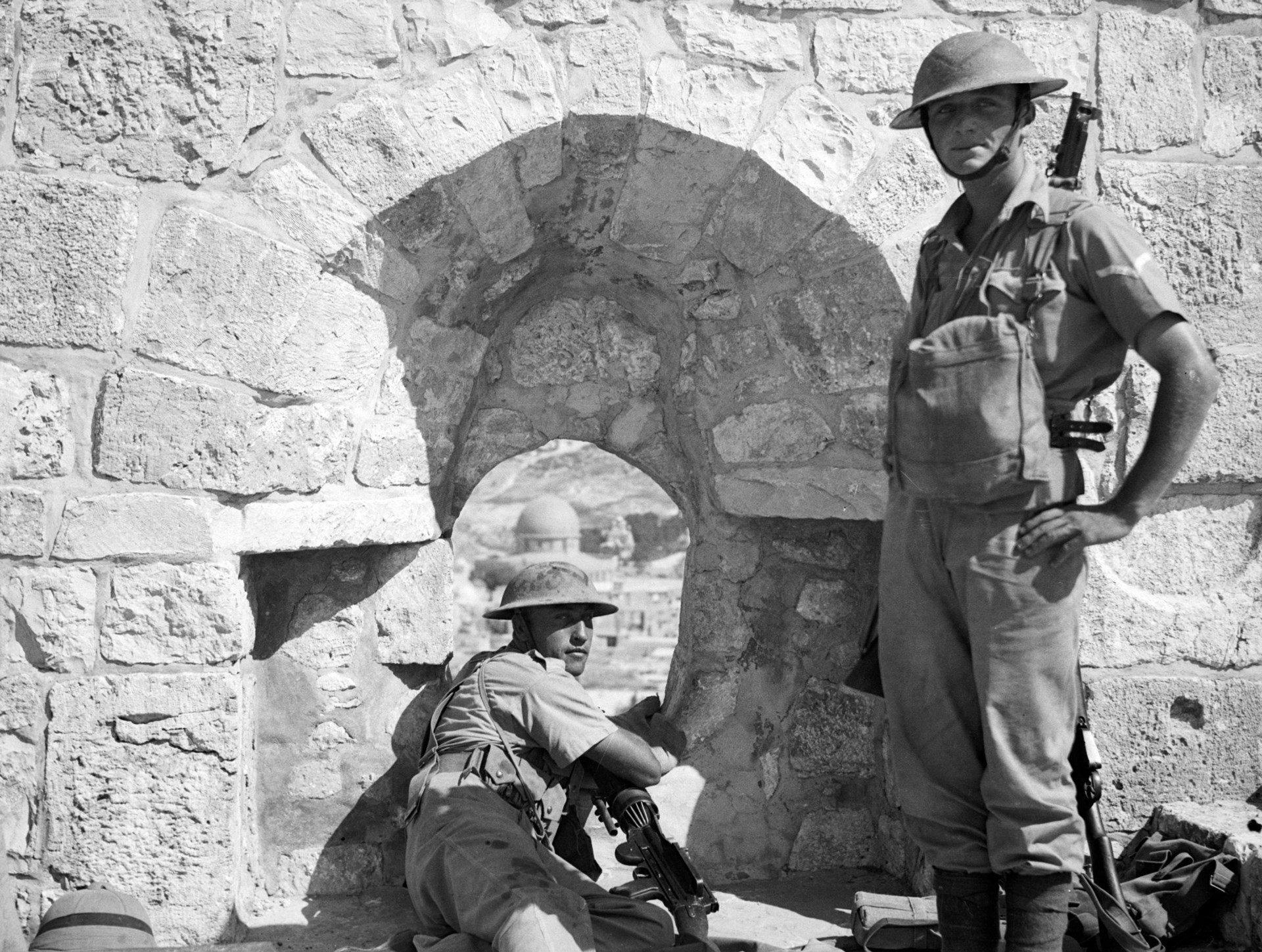 The ancient and the modern: A Lewis gun position atop the citadel Tower of David in Jerusalem, near the Jaffa Gate entrance to the old city.
The ancient and the modern: A Lewis gun position atop the citadel Tower of David in Jerusalem, near the Jaffa Gate entrance to the old city.
Violence between Arabs and Jews heated up, and on May 16, 1936, the President of the Arab Higher Committee and Mufti of Jerusalem called for a general strike of all Arab workers in opposition to Jewish immigration. At first, the strikes were essentially peaceful and political in nature, directed primarily against the British government administration of Palestine. By the end of 1936, this changed dramatically, and the Palestine territory would suffer from significant violence—with terrorism conducted by Arab and Jewish groups, internecine violence among Arab factions and aggressive suppression of the “Arab Revolt” by the British Army and the Palestine Police Force.
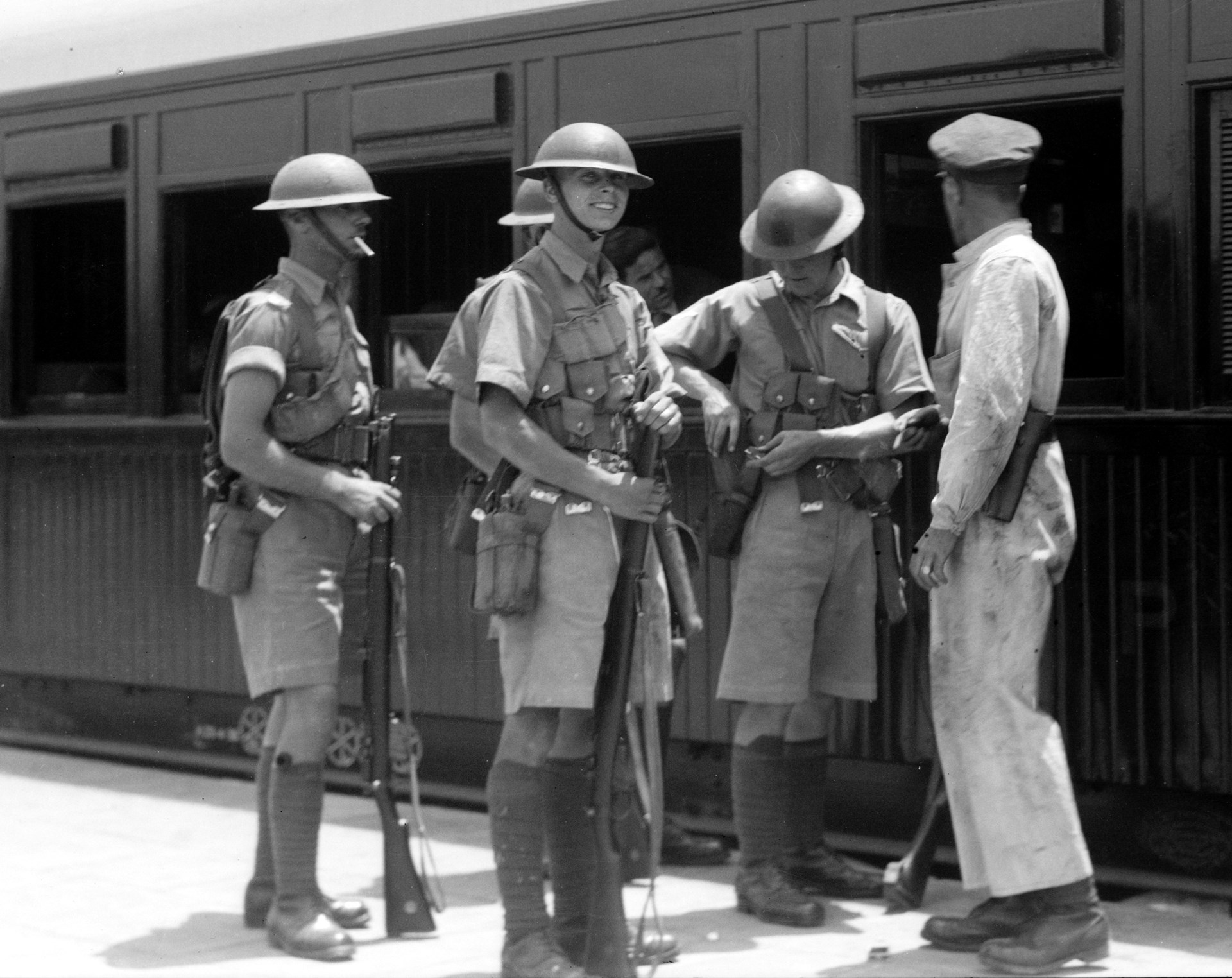 British troops guarding the railway station at Haifa during the 1936 revolt. Equipped with tropical kit and the excellent Rifle No. 1 Mk III, the men were at least well-supplied, if not well-informed about the confusing situation. The railway worker carries an unidentified revolver.
British troops guarding the railway station at Haifa during the 1936 revolt. Equipped with tropical kit and the excellent Rifle No. 1 Mk III, the men were at least well-supplied, if not well-informed about the confusing situation. The railway worker carries an unidentified revolver.
A Somewhat Popular Revolt
In 1936, Britain was still an empire, and even though His Majesty's government was becoming slightly more progressive, the notion of “independence” for most of the colonial territories was inconceivable. The Arab Revolt in Palestine was considered a rebellion by subjects of the Empire, and the inevitable cure was brutal repression to stamp it out. Palestine was considered an important strategic area for the British, and their military response was swift.
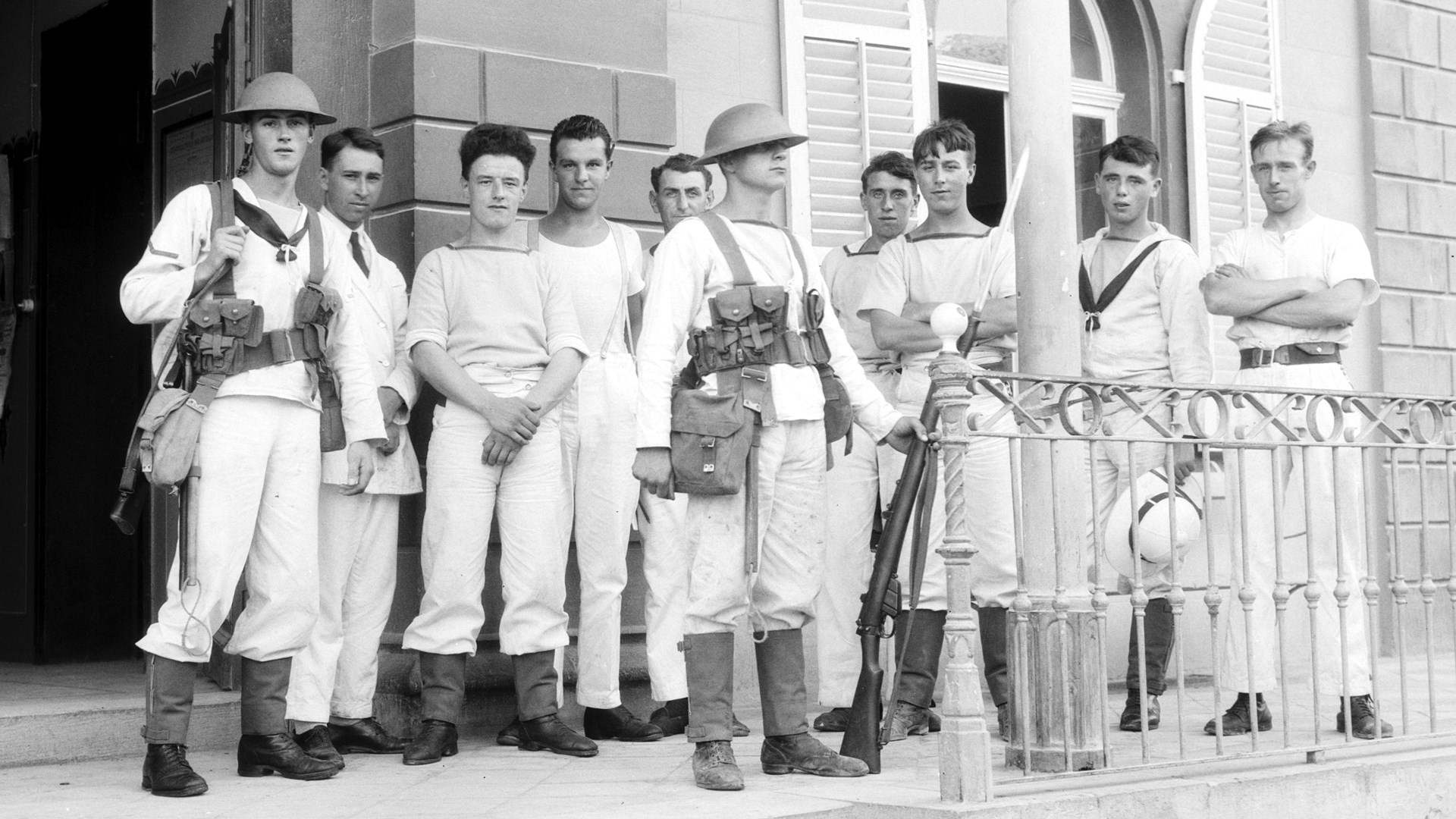 Royal Marines stationed at the ancient Levantine port city of Jaffa.
Royal Marines stationed at the ancient Levantine port city of Jaffa.
Among the Arabs, not everyone agreed on how to handle the situation. The significant Nashashibi clan angrily left the Arab Higher Committee, formed their own NDP Party, and collaborated with the British. This led to an intra-Arab-clan civil war, as the NDP created militia groups (called “Peace Bands”) to combat Arab nationalist and Jihadist factions. In the Palestinian countryside, the villages and their residents were forced to take sides, and this rarely seemed to have anything to do with politics or rational decision-making. Instead, clan sided with clan, tribe fought against tribe, and often, the never-ending blood-feud was the Arab strategy.
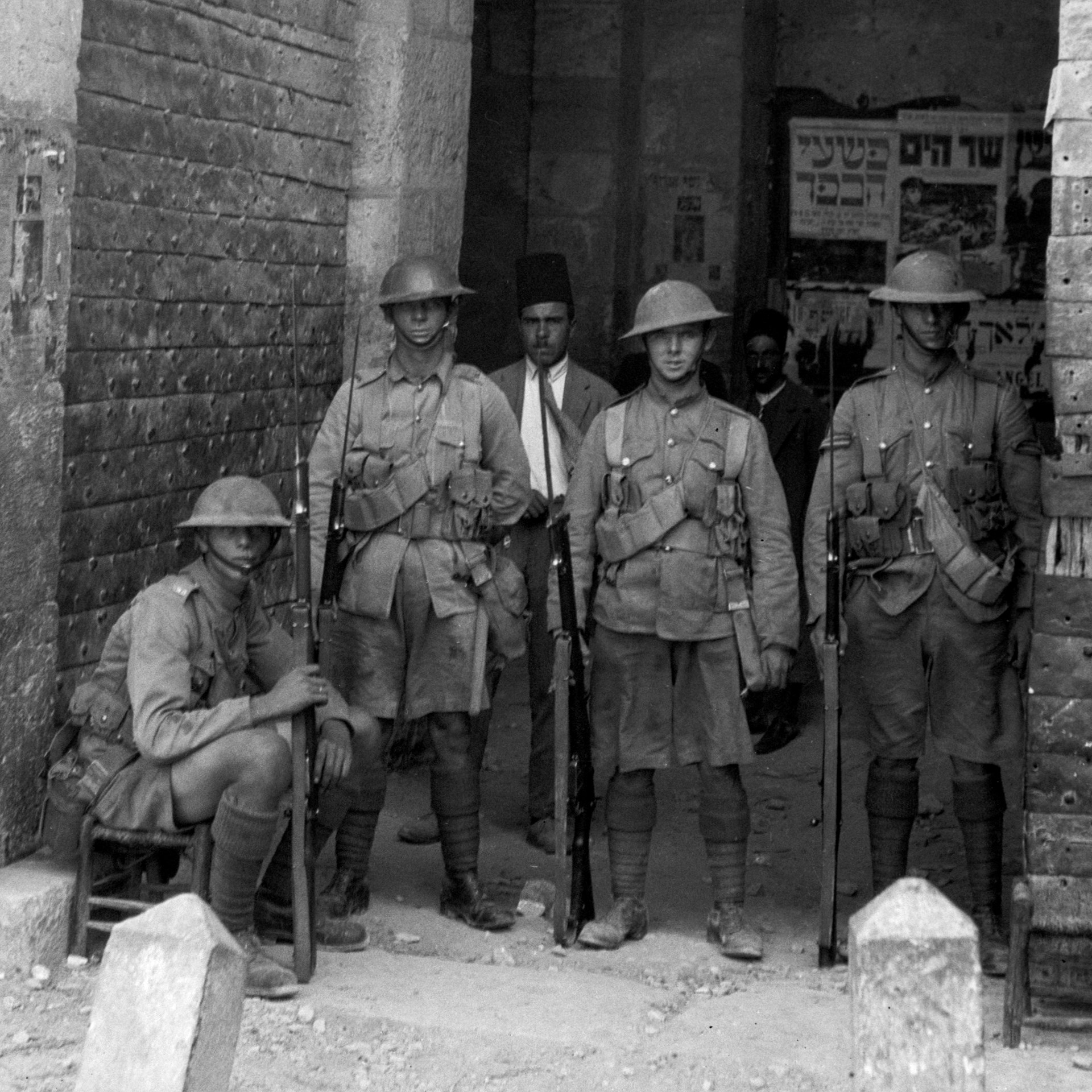 As the revolt wore on, British troops were described as being found “at every turn” in old Jerusalem.
As the revolt wore on, British troops were described as being found “at every turn” in old Jerusalem.
Some historians estimate that as much as 10 percent of the Palestinian population of adult males was lost during the revolt—those men either killed, badly wounded, jailed or exiled. The general strike and later revolt had disastrous economic consequences for the Arabs as well, and employment opportunities for Arab men with British or Jewish businesses disappeared long after the fighting was over.
Palestinian Arabs were not in a strong military position before the revolt, and their lack of experience and inability to effectively coordinate actions cost them more than 10,000 firearms (a hodgepodge of 19th-century and early 20th-century guns) and what few heavy weapons they had.
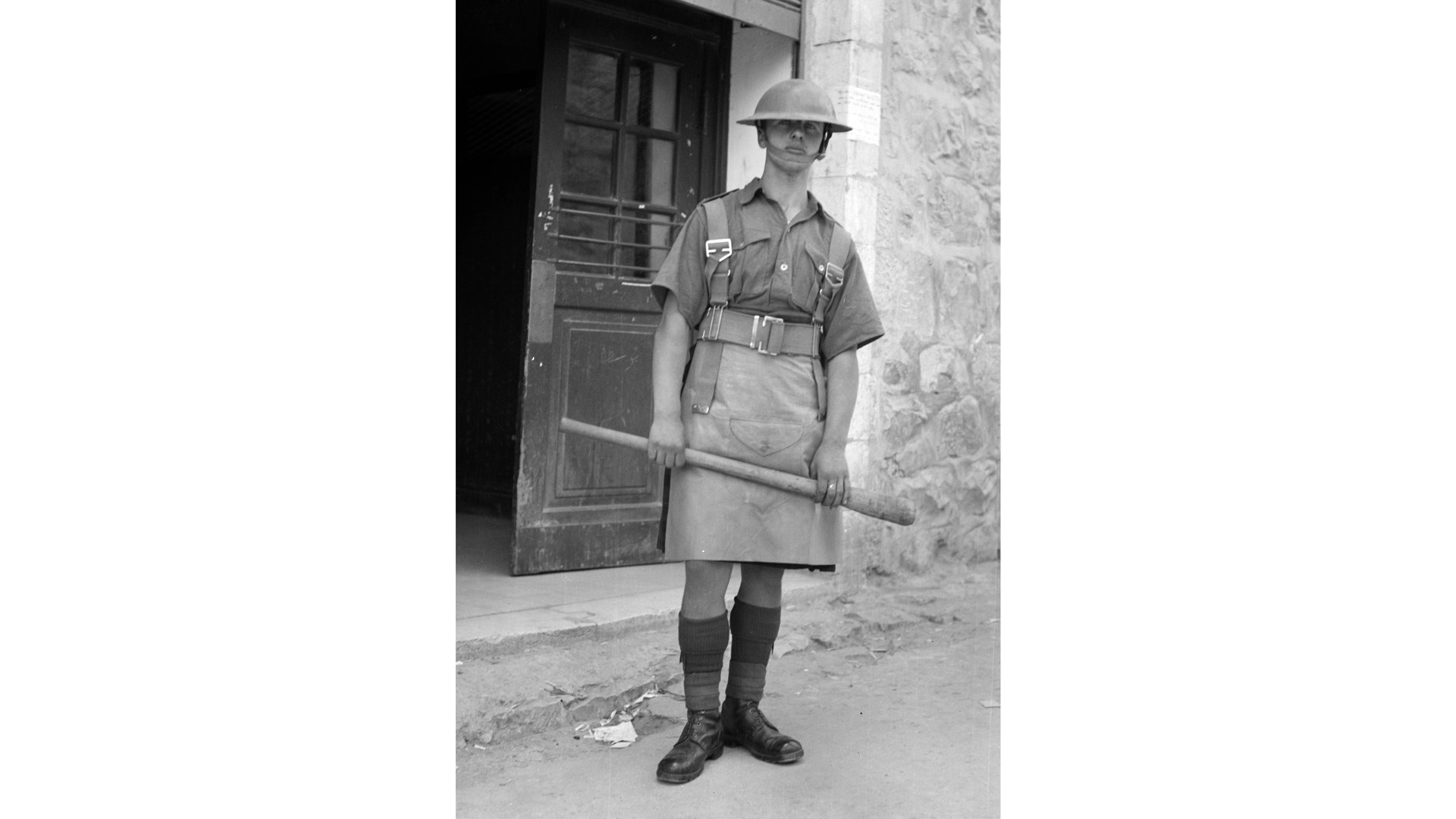 Less lethal: A British soldier prepared for riot control with a sturdy axe handle.
Less lethal: A British soldier prepared for riot control with a sturdy axe handle.
The British army provided some equipment to Jewish groups during this time—particularly the Supernumerary Police/Settlement Police operating in smaller cities and protecting the Jewish settlements. Many of these small Jewish communities were isolated, and a system of escorted truck convoys was established to keep them supplied. Armored gun-trucks and well-protected trains were constructed to keep the lines of communication and supply open. British troops improvised various mobile gun platforms, ranging from light trucks to protected railroad cars, normally armed with Lewis machine guns.
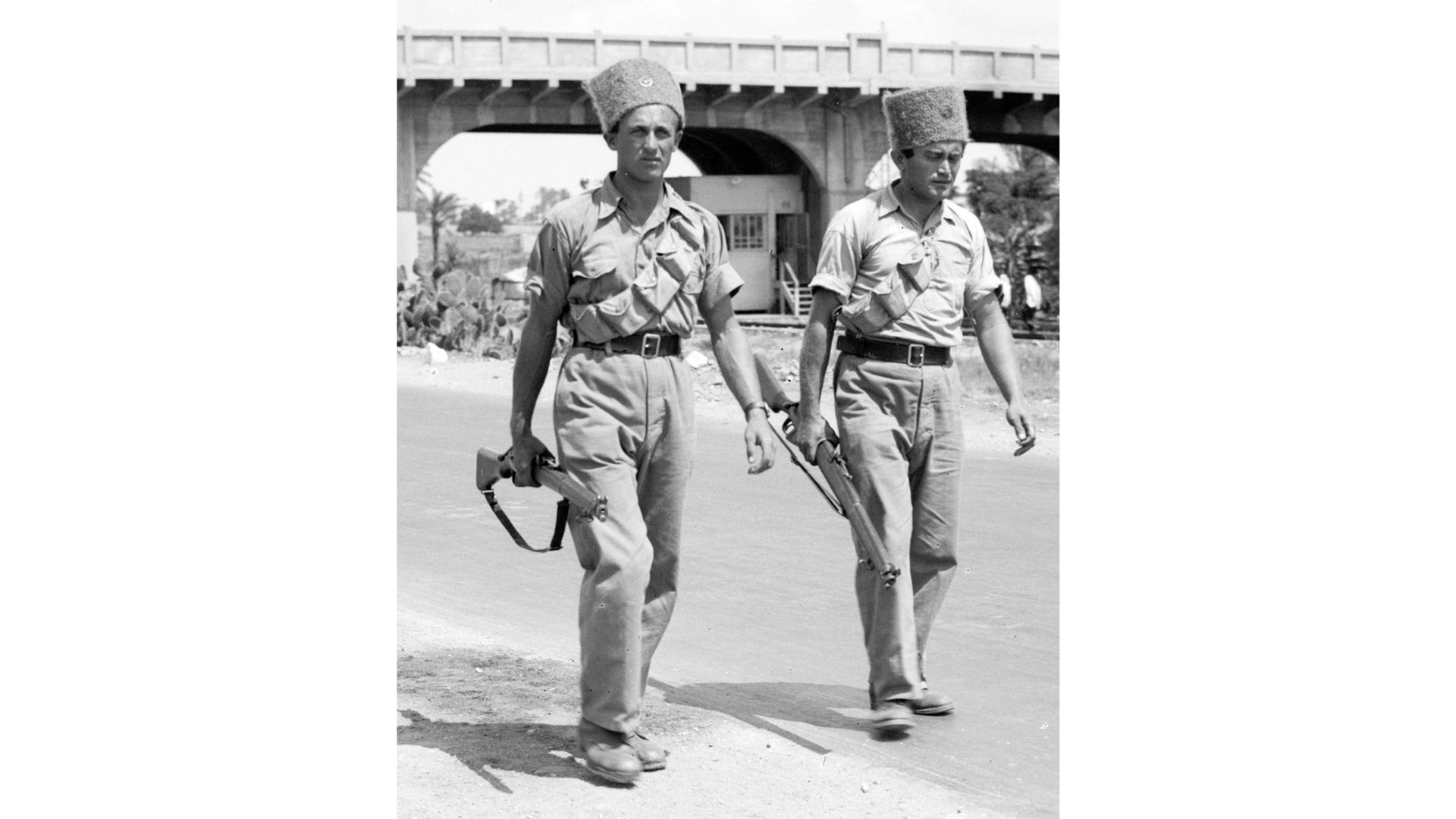 Equipped with a Rifle No.1 Mk. III by the British, Jewish Supernumerary policemen patrol the streets of Haifa.
Equipped with a Rifle No.1 Mk. III by the British, Jewish Supernumerary policemen patrol the streets of Haifa.
An Overwhelming British Response
The initial British garrison in the Palestine Mandate was small and neither well-equipped nor mobile enough to adequately respond to attacks by Arab guerillas, bombings, sniper fire, sabotage and robberies. “Emergency Regulations” created a form of martial law imposed across Palestine. British military courts ruled, prison camps were created and grew rapidly, and punitive fines were imposed on villages suspected of supporting the revolt.
Despite their lack of experience and coordination, Arab attacks had the British Army on the defensive for a good portion of 1937. Under great pressure, traditional British discipline began to break down, and some of the Army’s responses became extreme. Several atrocities, including massacres at the towns of Halhuh and al-Bassa, were documented.
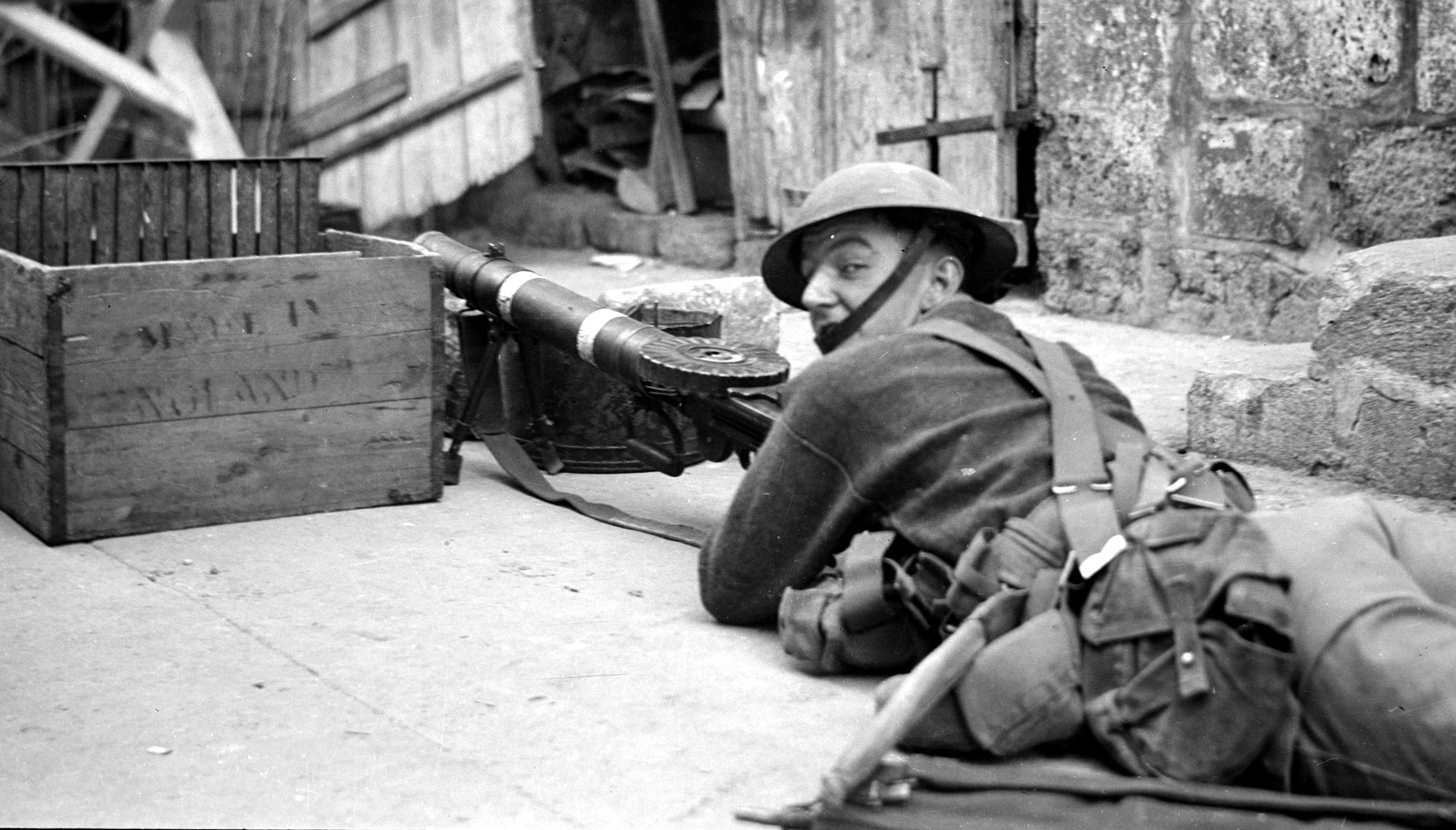 A Lewis gunner on the streets of Jerusalem during 1938. The Lewis had proven itself during World War I and remained as the British light machine gun until the Bren was fully issued by 1939. Note the standard 47-round pan magazine (with an additional magazine carried in the canvass holder on the gunner’s hip).
A Lewis gunner on the streets of Jerusalem during 1938. The Lewis had proven itself during World War I and remained as the British light machine gun until the Bren was fully issued by 1939. Note the standard 47-round pan magazine (with an additional magazine carried in the canvass holder on the gunner’s hip).
In 1938, Britain dedicated the much-needed military resources to address the situation. British troop strength grew to more than 20,000 men that year and continued to grow. Estimates range as high as 40,000 British troops deployed to the Palestine Mandate by the end of the revolt in 1939 in August 1939—just days before the German invasion of Poland that would ignite World War II in Europe.
The borders to Lebanon, Syria and Trans-Jordan were secured to prevent gun-smuggling and to restrict the movement of insurgent groups. A series of 70 forts were created throughout Palestine to secure strategic roads, railways and communication lines, and to lock down communities known to harbor rebel troops.
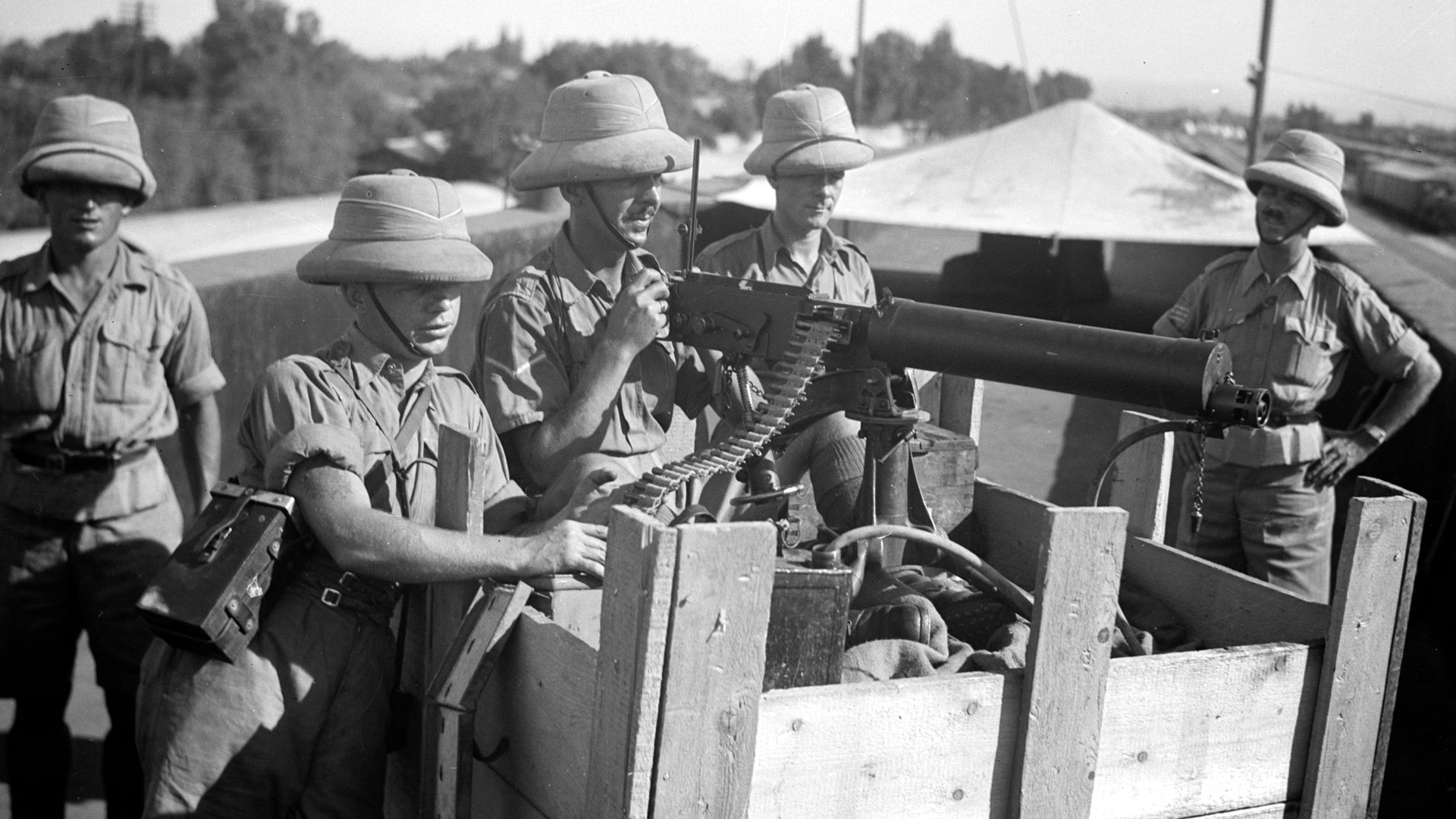 The Vickers machine gun was one of the dominant infantry arms of the two world wars. This example covers a railroad station in Palestine—the smooth water jacket indicates this was one of the Vickers MGs made at Crayford in early 1937.
The Vickers machine gun was one of the dominant infantry arms of the two world wars. This example covers a railroad station in Palestine—the smooth water jacket indicates this was one of the Vickers MGs made at Crayford in early 1937.
The British army in Palestine was equipped with essentially the same tools as it had used in 1918. The backbone of the infantry was the fabulous Short, Magazine Lee-Enfield (SMLE), designated as the No. 1, Mk III rifle after 1926 and chambered in.303 British, one of the finest military firearms ever made. The Lee-Enfield would continue its service throughout World War II and beyond.
British automatic firearms included the well-trusted Lewis gun (.303 British), the light MG hero of the Great War. At 28 lbs., the Lewis was growing a bit long in the tooth, and newer LMG designs were considerably lighter. Even so, the Lewis served well in Arab Revolt and would continue to serve into World War II—primarily as a light anti-aircraft machine gun. The Bren Gun (.303 British) was just coming into use in the British army in 1938, and only a handful made it into action during the Revolt. The Bren would go on to be one of the most celebrated machine guns of the Second World War.
Finally, the much-celebrated Vickers heavy machine gun (.303 British), another hero of the Great War, remained the base of British infantry firepower. Due to the developing small-unit, and increasingly mobile nature of the fighting in Palestine, the Vickers guns were normally kept in fortifications or to cover valuable locations like rail stations and road junctures. The Vickers would also go on to distinguish itself yet again in World War II and beyond.
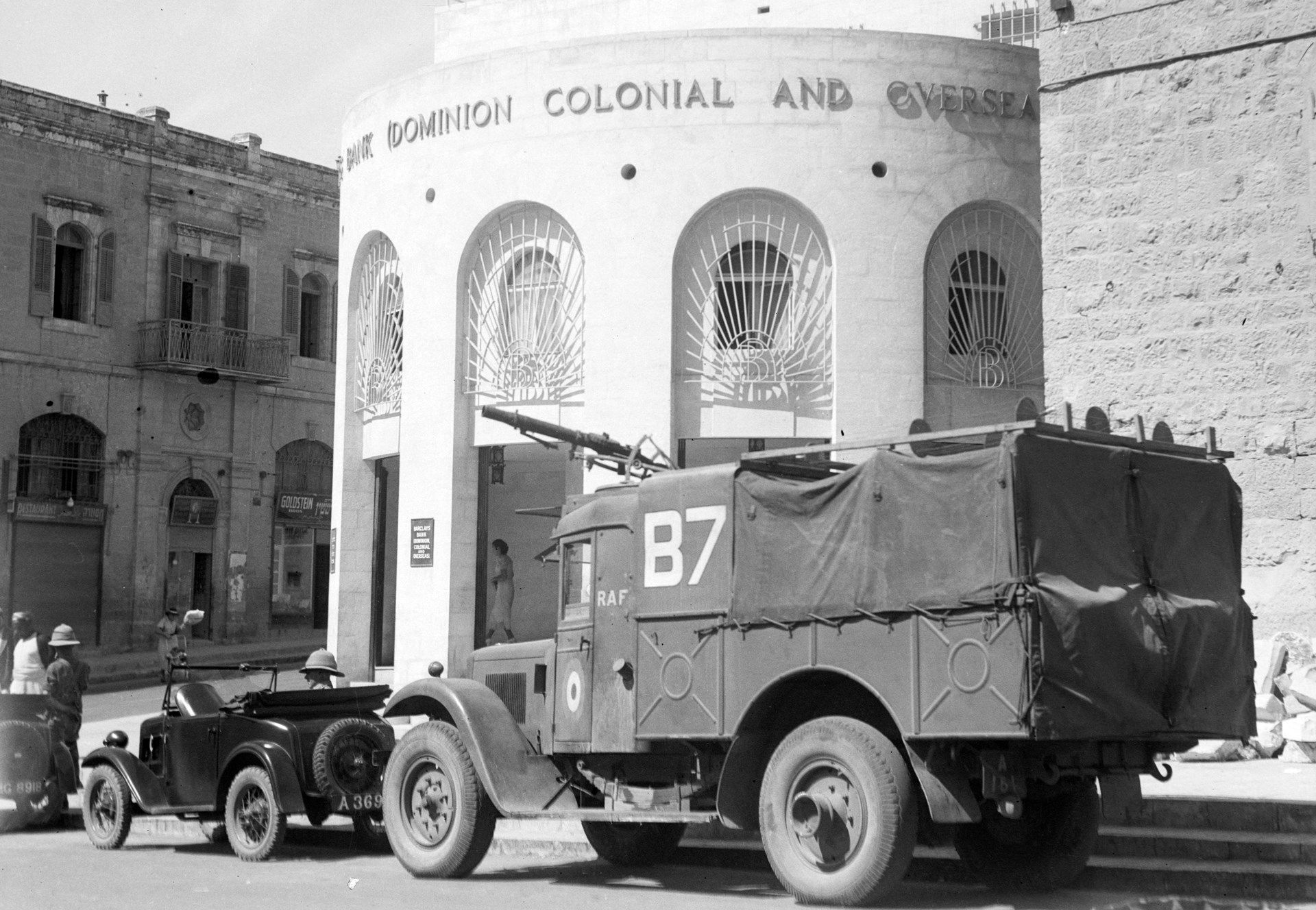 A great deal of British force’s attention was consumed by convoy escort, protecting government, transportation and communications facilities and securing financial institutions. Note the Lewis gun in a traversing anti-aircraft mount on the RAF vehicles seen outside Barclays Bank in 1938.
A great deal of British force’s attention was consumed by convoy escort, protecting government, transportation and communications facilities and securing financial institutions. Note the Lewis gun in a traversing anti-aircraft mount on the RAF vehicles seen outside Barclays Bank in 1938.
A New Era Of Air Support
The RAF played an important role in suppressing the rebellion and developed modern tactics for cooperating with Army units. Relatively early in the revolt, British patrols were often accompanied by a radio vehicle. A system of “XX” radio signals was developed that had immediate priority over all other radio traffic.
RAF airfields in Palestine were never too far away, and a flight of light bombers could normally be scrambled within five minutes to provide air support for a British infantry unit under attack. The Hawker Hart or Hawker Audax light bombers were quickly on the scene, able to put up to 500 lbs. of bombs on target and strafe Arab insurgents with a forward-firing Vickers MG. The guerrilla forces had no answer for British air interdiction, and dozens of “XX” transmissions resulted in significant Arab losses.
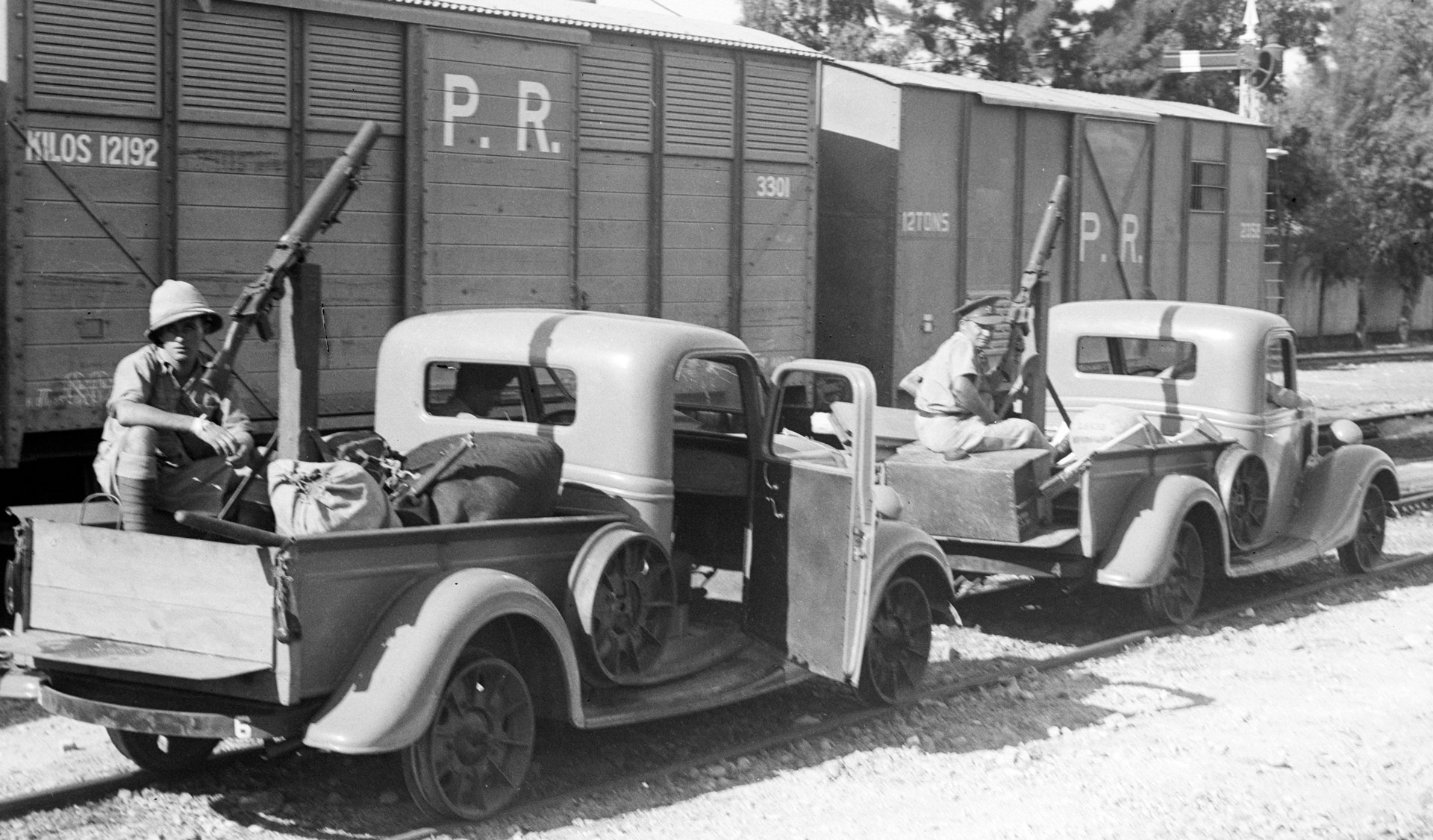 Mobile firepower: British light trucks, equipped with Lewis guns and converted to railway travel, were used to patrol the vital rail lines in Palestine to prevent sabotage.
Mobile firepower: British light trucks, equipped with Lewis guns and converted to railway travel, were used to patrol the vital rail lines in Palestine to prevent sabotage.
The RAF also developed a system of “air policing,” that provided useful intelligence on concentrations of Arab fighters, spotting smuggling along the border and identifying sabotage on rail lines, roads and bridges. Some insurgent-friendly villages were also bombed to discourage their sympathies to the rebels. This was the beginning of modern close-air-support operations against insurgent forces. Without air support, or a serious counter to enemy aircraft, insurgent forces are often driven underground—like the Viet Cong in the Vietnam War and Hamas’ extensive network of tunnels in Gaza.
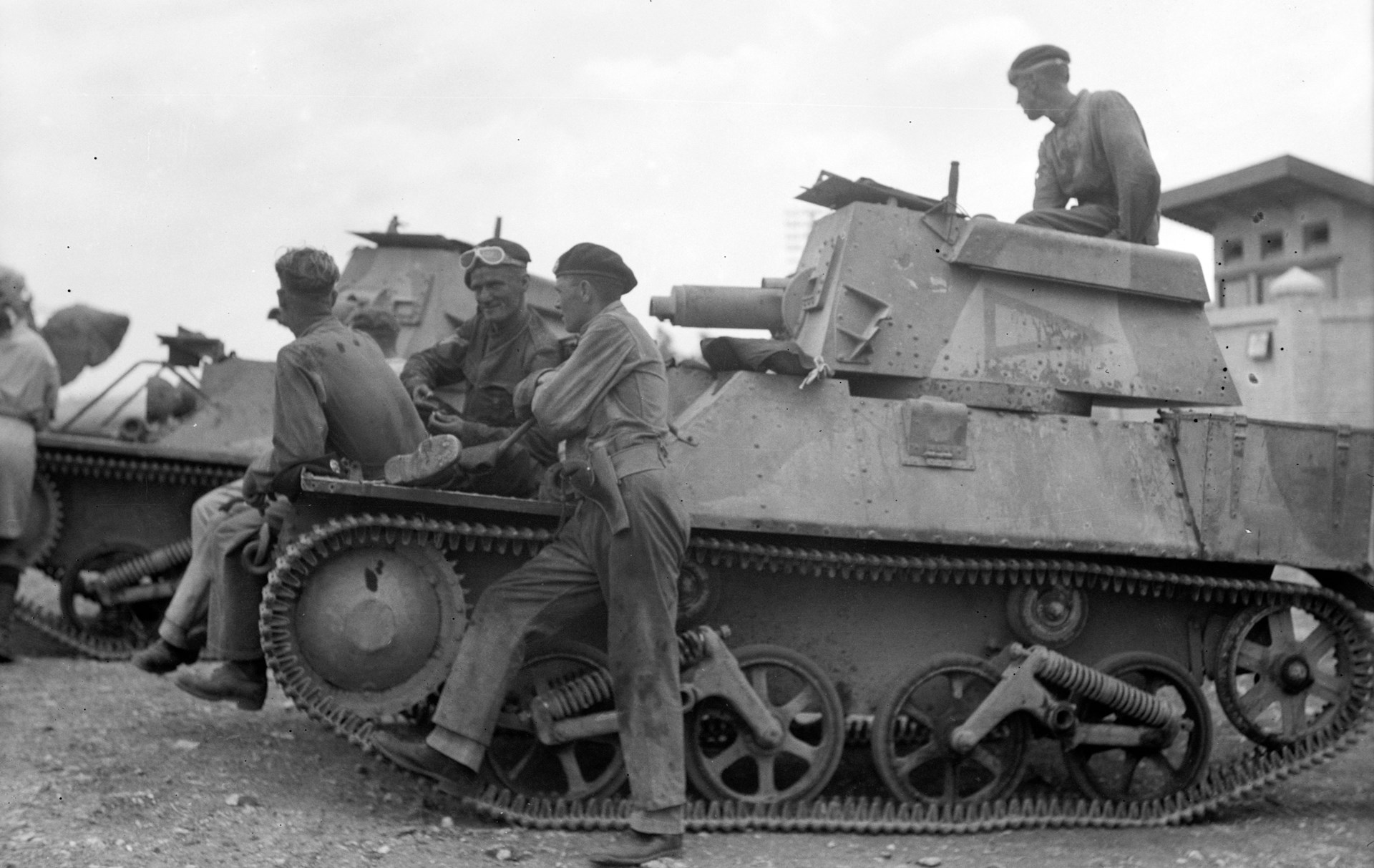 British forces in Palestine featured an armored component. Note the Vickers light tank Mk III armed with a turret-mounted .50-cal. Vickers machine gun (chambered for 12.7x81 mm British).
British forces in Palestine featured an armored component. Note the Vickers light tank Mk III armed with a turret-mounted .50-cal. Vickers machine gun (chambered for 12.7x81 mm British).
A Practical, Albeit, Temporary Conclusion
After 40 months of rebellion, the Arab Revolt ended on Aug. 26, 1939. The unmistakable drumbeat announcing World War II could be felt all the way to the Middle East. Knowing that the Jewish population in Palestine had no other choice than to support England against Nazi Germany, and fearing that Hitler might successfully court the Arabs, the British government made a difficult but practical choice.
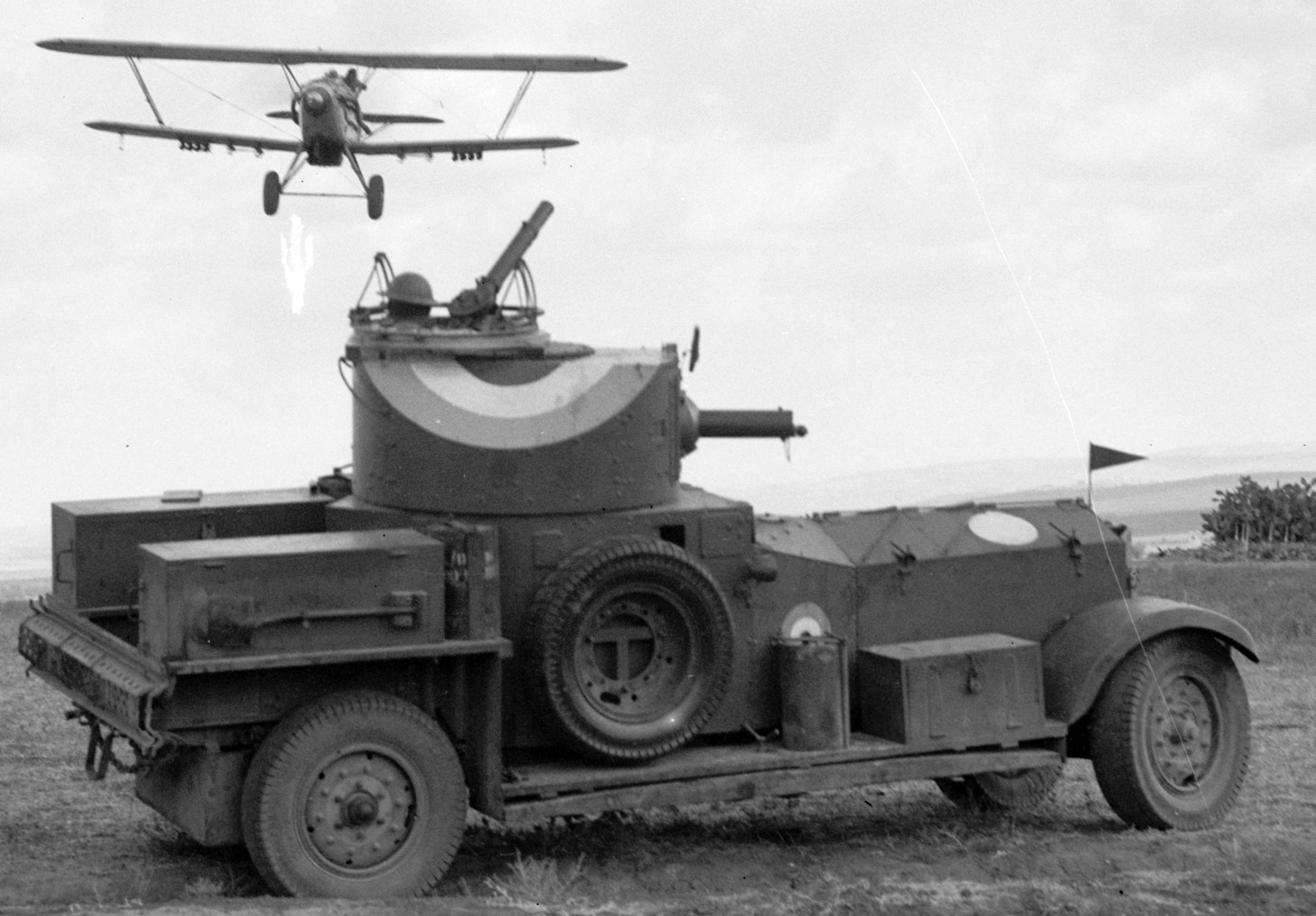 The RAF played an important role in the British intervention—the RAF sent two groups of “Car, Armoured, Rolls Royce Type A” cars to Palestine. The RAF armored cars featured the standard Vickers MG (.303 British) in the turret, along with a Lewis gun in a rotating AA mount. British light bombers were quickly airborne to interdict Arab attacks and did so nearly 50 times during the revolt.
The RAF played an important role in the British intervention—the RAF sent two groups of “Car, Armoured, Rolls Royce Type A” cars to Palestine. The RAF armored cars featured the standard Vickers MG (.303 British) in the turret, along with a Lewis gun in a rotating AA mount. British light bombers were quickly airborne to interdict Arab attacks and did so nearly 50 times during the revolt.
As British Prime Minister Neville Chamberlain said: “If we must offend one side, let us offend the Jews rather than the Arabs.” And so it came to pass that British policy shifted to a new focus on Arab appeasement. Promises were made that a Jewish National Home would only be established within an independent Palestinian state, and that just 75,000 Jews would be allowed to immigrate to Palestine within the next five years.
Neither Jewish nor Arab leaders agreed with the language or the nuances of the British “White Paper” on the administration of Britain’s Palestinian Authority, but all sides agreed to stop fighting amongst themselves, at least in the meantime. The all-consuming conflagration of World War II was set to determine the future of humanity. The war to establish the nation of Israel would have to wait until 1948.
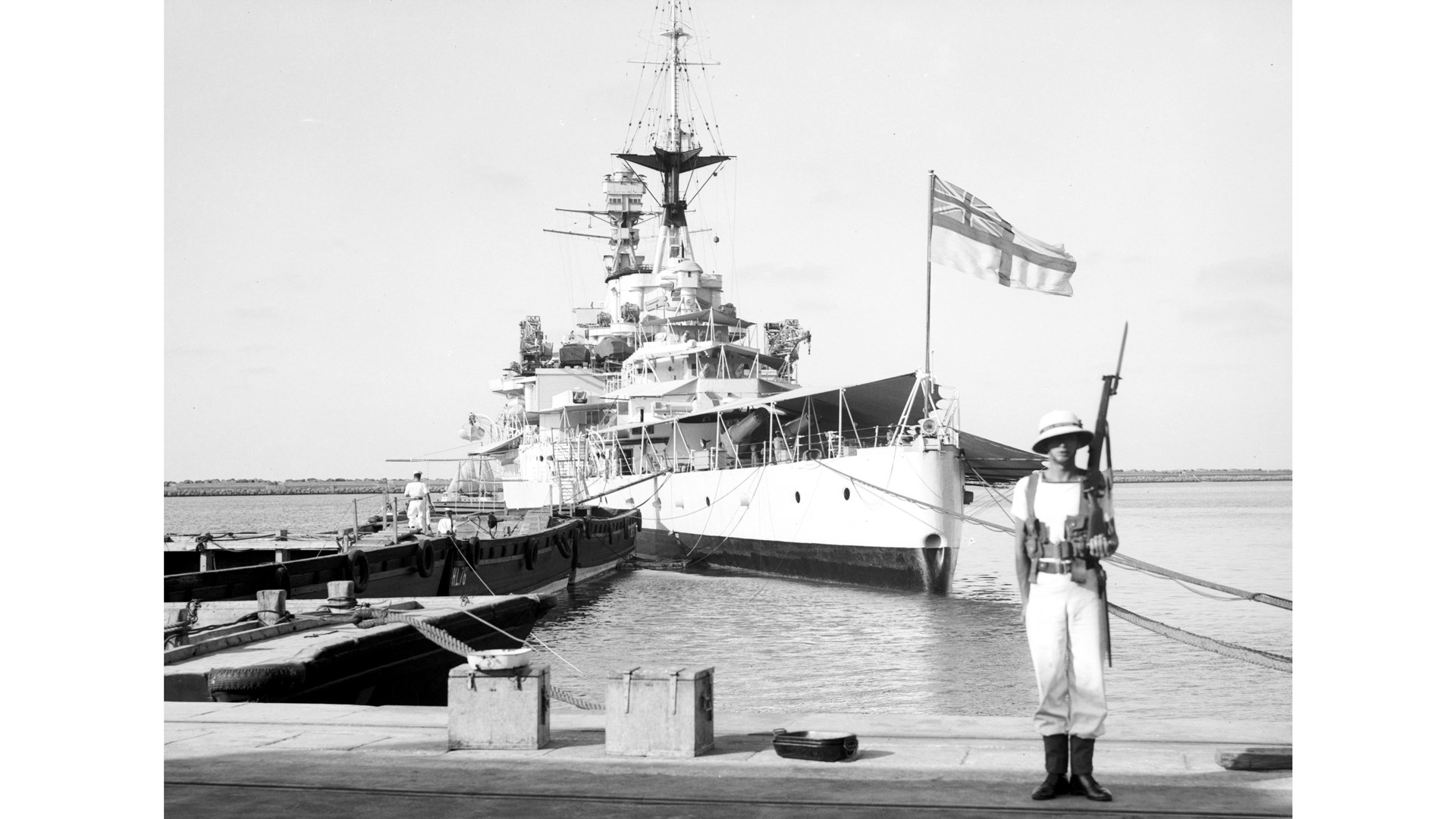 A show of force: A Royal Marine stands guard ashore while the battlecruiser HMS Repulse (with six 15" guns) is moored at Haifa.
A show of force: A Royal Marine stands guard ashore while the battlecruiser HMS Repulse (with six 15" guns) is moored at Haifa.












